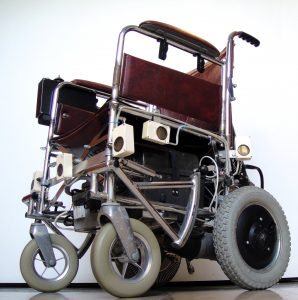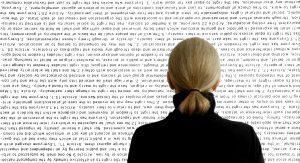
A new report released today by the University of Glasgow commissioned by DACS, the Design & Artists Copyright Society, reveals the extent of falling earnings for visual artists in the UK. The UK Visual Artists’ Earnings and Contracts Report 2024 shows that the median income for visual artists is just £12,500 a year, a 40% decrease in earnings since 2010 (£16,000), and 47% lower than the income of full-time minimum wage workers (£23,795).
Researchers found that whilst 48% of respondents described their visual arts practice as their only occupation, because of low pay, 51% of visual artists continue to have to supplement their income with additional work. However, even with working several jobs, artists in the UK will still only earn a median of £17,500 a year, significantly below the national minimum wage. The report also reveals a shared concern across the visual artists interviewed regarding the unauthorised use of their work to train AI systems, which could undermine IP rights and contribute to a reduction in commissions, further impacting future earning potential.
Christian Zimmermann, CEO, DACS said:
“Most visual artists are freelancers and despite being essential to the UKs visual arts sector, they are among the lowest-earning workers in the creative industries. Over 80% of all visual artists surveyed said that their sources of earnings are unstable, or very unstable. The widespread low pay and precarity artists face today pushes talent out of the sector, and limits the creativity of our artists. This report shows us in no uncertain terms that visual artists need greater support and protections to navigate the challenges of a changing world, whether that’s Generative AI scraping their work, income instability, or the rising costs of studio rents.”
Additionally, the report reveals significant disparities in pay across demographics, with women earning 40% less than men, and a 70% pay gap between disabled and non-disabled respondents, with disabled respondents earning a median of just £3,750. These findings support new recommendations for the Government made by DACS, alongside more than 25 other arts organisations, to help support the UK’s visual artists and arts sector. The Visual Arts Manifesto published in June advocates for fairer pay and improved support structures for artists. Key short-term proposals include establishing the Smart Fund to generate collective licensing revenue and appointing a Freelancer Commissioner, two policies recommended by the Culture, Media and Sport Committee in April 2024. The manifesto also calls for robust AI regulation to ensure remuneration and control for all artists, as well as financial stability and security for disabled artists.
The UK Visual Artists’ Earnings and Contracts Report 2024 follows an independent study by the Centre for Regulation of the Creative Economy (CREATe), commissioned by the Design and Artists Copyright Society (DACS), of over 1200 visual artists across the UK, including photographers, painters, illustrators, sculptors, and those working in other media.
Dr Amy Thomas and Dr Arthur Ehlinger (Research Leaders, University of Glasgow), said:
“In recent months, AI has been at the forefront of concerns surrounding displacement of artistic labour. However, our survey shows that there are many other factors – new and ongoing – that impact how artists get paid. It’s clear that in the UK, the fallout of the Covid-19 pandemic, coupled with Brexit, have disproportionately negatively impacted artists’ earning potential. But we also see pervasive and systematic evidence of inequality – a large gender gap, and huge earnings disparity between disabled and non-disabled artists. These findings have troubling implications for the sustainability and diversity of artistic professions.”
The UK’s creative industries provide around 2.46 million jobs and have an estimated GVA of £126 billion, with the arts sector contributing £49 billion. In 2023, 91% of the population engaged in the arts, and the UK Art Market, worth £9.7 billion, is one of the largest in the world. This new report shows that artists’ earnings are at an all-time low, and the UK must find new ways of supporting artists, as outlined in the Culture, Media and Sport Select Committee’s Creator Remuneration report earlier this year.
Rory Beard, artist based at ACME Propeller Factory Studios, London, said:
“The amount of conversations I’ve had about how a good fee becomes a bad one by the time a commission is over! Too often clients can rely on artists churning out quality to avoid damaging their own reputations, and that any exposure is better than none. And you’d rather have the work than not, so you don’t risk negotiating too high. A consequence of this is where one artist can afford to work for free the worse it is for the more precarious.”
The UK Visual Artists’ Earnings and Contracts Report 2024 is avaiable from today 25th November at dacs.org.uk/artists-earnings-report-2024
Report Methods
The UK Visual Artists’ Earnings and Contracts Report 2024 is based on a combination of quantitative and qualitative data, collected through a mixed-methods research approach. The quantitative data was gathered via an online survey conducted between February and April 2024, which received 1,241 total responses. In addition, a series of interviews and focus groups were conducted, with the goal of capturing the experiences and perspectives of visual artists, providing explanatory context to the quantitative findings. More details about the survey methodology can be found in the original publication.
Researchers
Arthur Ehlinger, Researcher and Knowledge Exchange Officer
Amy Thomas, Lecturer in Intellectual Property and Information Law
Michele Battisti, Professor in Economics
Martin Kretschmer, Professor in Intellectual Property Law
Funding
This research was funded by the Design and Artists Copyright Society (DACS). The research was independently designed and has been conducted to independent academic standards. The commissioner does not control the analysis.







